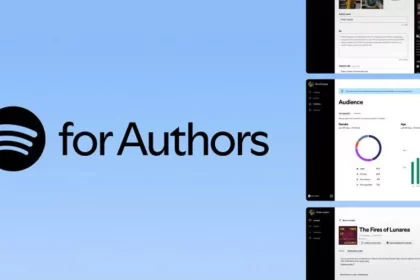Generative AI is a key ingredient for business success, the technology will contribute more than $15 trillion to the global economy by 2030. In a survey conducted by NVIDIA, 95 percent of respondents reported using AI, and nearly two-thirds believed AI was important to their company’s future success. In fact, organizations in every field are transforming employee productivity, improving products, and providing higher quality services with the help of productive artificial intelligence.
According to Hoshio, the event that happened on November 22, 2022, although it was virtual, shook the foundations of almost every industry on the planet. On that day, OpenAI released ChatGPT, the most advanced AI chatbot ever developed. This has led to a dramatic increase in demand for productive AI applications that help businesses become more efficient. This efficiency is evident from providing answers to customers’ questions to speeding up the work of researchers and many other aspects.
Businesses that were already operating in the field of artificial intelligence are now quickly adopting the latest applications offered in this field. Generative AI increases the ability of algorithms to create new text, images, sounds, animations, 3D models, and even computer code at a very high speed, changing the way people work and enjoy different activities.
By using large-scale language models (LLM) to handle queries, AI technology can dramatically reduce the time people spend on manual tasks such as searching and gathering information.
According to PwC, AI could contribute more than $15 trillion to the global economy by 2030, and the impact of AI adoption could be greater than inventions such as the Internet, mobile broadband, and smartphones.
Generative artificial intelligence is a powerful computer system that includes various parts such as GPU, DPU, network and CPU to increase the speed of various applications. This technology can be used by organizations in different fields such as science, analytics, engineering and consumer industries for different purposes.
early adopters of AI across industries; From drug discovery, financial services, retail and telecommunications to energy, higher education and the public sector, they are all combining fast computing with generative artificial intelligence to transform business operations, deliver better services and increase their productivity.
Generative artificial intelligence for financial services
According to a recent NVIDIA survey, the best use cases for AI in the financial services industry are customer service and deep analytics, where natural language processing and LLM are used to provide better answers to customer questions and uncover investment insights. Another common use of AI is in recommender systems that help personalize banking experiences, improve marketing strategies, and provide investment guidance.
Advanced AI applications have the potential to help the financial industry better prevent fraud and transform all aspects of banking, from portfolio planning and risk management to compliance and automation.
80% of business information is written in an unstructured format, including text, making them prime candidates for productive AI use. For example, Bloomberg produces 5,000 news stories about finance and investment every day. These stories contain a huge amount of unorganized data that makes them difficult to use. However, generative AI can be used to make sense of this data, which can then be used to make timely investment decisions.
NVIDIA, Deutsche Bank, Bloomberg and others are creating LLMs trained in domain-specific data and proprietary data to power financial applications.
Financial transformers or “FinFormers” can understand financial information that is not clearly structured. Help in cases such as answering questions through chatbots, summarizing and translating financial texts, warning about the risks of other people or companies, quickly finding lost data and finding mistakes in financial information.
AI generator tools that generate text images and other types of content use specific methods to ensure that the content they create is accurate and relevant to finance. These methods are actually frameworks that can include a company’s data to train an AI model, remove any bias in the data, and use “guards” to keep conversations relevant to financial topics. All these measures ensure that the information generated is accurate and useful for business purposes.
Fintech startups and large international banks are expected to leverage LLM and generative AI to develop sophisticated virtual assistants to serve internal and external stakeholders, create hyper-personalized customer content, automate document summarization to reduce manual work, and analyze public and private terabytes. give

Generative AI for Retail
With around 60% of all purchases made online, artificial intelligence has become a critical tool to help retailers meet changing customer expectations and stand out from the rising tide of competition. .
Retailers use AI to improve customer experiences, change prices to match demand, create customer segments, offer products tailored to individual preferences and needs, and help customers easily find what they’re looking for.
Generative AI can support customers and employees at every stage of the purchase.
Using AI models trained on brand and product-specific data, retailers can create stronger product descriptions that improve their search engine rankings and help shoppers find exactly what they’re looking for. For example, generative AI can use metatags containing product attributes to create more comprehensive product descriptions that include various terms such as “low sugar” or “gluten-free.”
AI virtual assistants can perform various tasks related to organizational resource planning, such as checking inventory and finding when to ship orders. They can also create customer service messages to let shoppers know which items are available and when orders will ship, and even help customers change their orders.
Fashable, a member of NVIDIA Inception’s global network of tech startups, uses generative artificial intelligence to create virtual clothing designs, eliminating the need to use physical fabric during product development. With models trained on proprietary and market data, it reduces the environmental impact of fashion design and helps retailers tailor clothing to current market trends and tastes.
Retailers can be expected to use AI to capture and retain customer attention, make better purchases, and earn more revenue by showing customers the right products at the right time.
Generative artificial intelligence for communication
In an NVIDIA survey covering the communications industry, 95 percent of respondents reported using AI, and nearly two-thirds believed AI was important to their company’s future success.
Artificial intelligence applications in handheld devices can support field technicians and guide them in performing repairs by scanning equipment and producing virtual training. These virtual guides can then be augmented with augmented reality, enabling technicians to analyze equipment in a 3D environment or contact an expert remotely for support.
With the help of artificial intelligence, new revenue opportunities will be created for telecommunication companies. With new infrastructure and access to vast data sets, telcos around the world are now offering generative AI as a service to enterprise and government customers.
As generative artificial intelligence advances, telecom providers are expected to use the technology to optimize network performance, improve customer support, detect security intrusions, and improve maintenance operations.

Generative artificial intelligence for energy
In the energy industry, AI is powering asset optimization, smart grid management, renewable energy forecasting, grid security, and more.
Energy operators are looking to AI to meet growing data demands on legacy infrastructure and new government regulations to help them respond.
In the United States, electric utilities spend billions of dollars annually to inspect, maintain, and upgrade energy generation and transmission infrastructure.
With a small set of image training data, algorithms can generate thousands of physically accurate images to train computer vision models that help field technicians detect corrosion, breakage, blockages in network equipment, and even spot fires. This type of proactive maintenance increases network reliability and resilience by reducing downtime, while reducing the need to send teams into the field.
Generative AI can also reduce the need for manual research and analysis. According to McKinsey, employees spend 1.8 hours per day searching for information, which is roughly 20% of their work week. To increase productivity, energy companies can train LLMs on proprietary data, including meeting notes, SAP records, emails, field best practices, and generic data such as standard material data sheets.
With this kind of knowledge repository connected to an AI chatbot, engineers and data scientists can get instant answers to highly technical questions. For example, a maintenance engineer troubleshooting pitch control issues in a turbine’s hydraulic system could ask a robot, “How should I adjust the hydraulic pressure or flow to resolve pitch control issues on a model turbine from the company?” Fix X?” A properly trained model will provide specific instructions to the user without having to search through a bulky manual to find the answer.
With applications of artificial intelligence for new system design, customer service and automation, modular AI is expected to increase safety and energy efficiency as well as reduce operating costs in the energy industry.

Generative artificial intelligence for the public sector
The biggest opportunity for artificial intelligence in the public sector today is to help public servants perform more efficiently and save resources.
The U.S. federal government employs more than 2 million civilian employees, two-thirds of whom work in professional and administrative jobs.
These administrative roles often involve time-consuming manual tasks, including drafting, editing and summarizing documents, updating databases, recording audit and compliance costs, and responding to citizen inquiries.
To control costs and bring more efficiency to routine business functions, government agencies can use generative artificial intelligence.
The ability of generative AI to summarize documents has great potential to increase the productivity of policymakers and staff, civil servants, procurement officers and contractors. In this regard, you can consider a 756-page report recently released by the National Security Commission on artificial intelligence. With reports and legislation often spanning hundreds of pages of dense academic or legal text, AI-powered summaries generated in seconds can quickly break down complex content into plain language, saving the human resources needed to complete the work. save
AI virtual assistants and LLM-powered chatbots can instantly provide relevant information to people online, taking the burden off the shoulders of employees who work in institutions such as the Treasury Department, IRS, and DMV.
With simple text inputs, AI content generation can help government officials create and distribute publications, email correspondence, reports, press releases, and public service announcements.
AI analytics capabilities can also help process documents to speed up the delivery of critical services provided by organizations such as Medicare, Medicaid, Veterans Affairs, USPS, and the State Department.
Generative artificial intelligence can be a central tool to help government institutions to continue operating within budget constraints, provide government services faster, and achieve positive public sentiment.
RCO NEWS
















